Our former President Dr. Patrick Hillery has died yesterday in his Dublin home, following a short illness, less than a month before reaching the age of 85. Before becoming President - the so far last male holder of the office - Dr. Hillery had been a TD for 22 years, a cabinet minister for 14 years, and Ireland's first ever EU Commissioner for three years.
 Patrick John Hillery was born on May 2nd, 1923 in Spanish Point, Miltown Malbay, Co. Clare. The son of Michael Joseph Hillery, a local medical doctor, and Ellen McMahon, a district nurse, he was educated locally before attending Rockwell College. At third level Hillery attended University College Dublin, where he qualified with a degree in medicine. Upon his conferral in 1947 he returned to his native town where he followed in his father’s footsteps as a doctor. His medical career saw him as a member of the National Health Council and Medical Officer for the Miltown Malbay Dispensary District. He also spent a year working as the coroner for West Clare.
Patrick John Hillery was born on May 2nd, 1923 in Spanish Point, Miltown Malbay, Co. Clare. The son of Michael Joseph Hillery, a local medical doctor, and Ellen McMahon, a district nurse, he was educated locally before attending Rockwell College. At third level Hillery attended University College Dublin, where he qualified with a degree in medicine. Upon his conferral in 1947 he returned to his native town where he followed in his father’s footsteps as a doctor. His medical career saw him as a member of the National Health Council and Medical Officer for the Miltown Malbay Dispensary District. He also spent a year working as the coroner for West Clare.On October 27th, 1955 Patrick Hillery married Dr. Mary Beatrice (Maeve) Finnegan, a fellow medical doctor. Together they had a son, John, and a daughter, Vivienne, who died after a long illness in 1985, shortly before her eighteenth birthday.
Dr. Hillery did not really aspire to a political career, but Éamon de Valera - then in opposition - persuaded him to stand with him for Fianna Fáil in Co. Clare in the 1951 general election.
The election resulted in a return to power for Fianna Fáil and Hillery was successful on his first attempt to get elected. But he remained on the backbenches for almost a decade, before finally becoming a minister following Éamon de Valera's retirement as Taoiseach in 1959.
Under the new Taoiseach Seán Lemass a new generation of politicians were introduced to government and a key player among this group was Dr. Patrick Hillery, who became Minister for Education in 1959, succeeding Jack Lynch in that post.
Patrick Hillery was responsible for much innovative thinking in a department which would become very important under Lemass' leadership. In 1963 he made a major policy speech in which he outlined many educational reforms that were to be introduced over the next decade. These included increased educational opportunities, the establishment of comprehensive schools and Regional Technical Colleges, and access by students to all public examinations. As Minister for Education Dr. Hillery prepared the ground for successive ministers to advance the reforms and initiatives he had begun. While Donagh O'Malley has received much of the credit for introducing free education, it was in fact Hillery who made this landmark announcement possible.
In 1965 Hillery succeeded Jack Lynch again by taking over as Minister for Industry and Commerce, but he only remained in this position for just over a year, before becoming the country's first Minister for Labour in 1966. This new department had been a dream of Lemass for several years and Hillery had the honour of being the first incumbent.
When Seán Lemass resigned as Taoiseach and leader of Fianna Fáil in November 1966 - a shock to many of his political friends - Dr. Patrick Hillery was invited by Lemass to allow his name to go forward for the leadership of the party. However, he declined the offer, explaining that he had no interest in becoming Taoiseach. Many historians have suggested that Hillery was Lemass' first choice to succeed him and "the best Taoiseach we never had". In the end Jack Lynch succeeded Lemass after a leadership contest with George Colley. Hillery retained his post as Minister for Labour following Lynch's reshuffle of the Cabinet, serving until 1969.
Following another victory for Fianna Fáil in the 1969 general election, Dr. Patrick Hillery became Minister for External Affairs (renamed Minister for Foreign Affairs in 1972). He earned a high international profile when, in the aftermath of "Bloody Sunday" (the killing of thirteen unarmed civilians in Derry by British troops), he traveled to the United Nations in New York to demand UN involvement in peace-keeping on the streets of Northern Ireland.
During the whole period Hillery remained one of Jack Lynch's staunchest allies in pursuing peaceful means with regard to the possibility of a civil war breaking out. Although considered a mild-mannered politician, he showed his mettle at the 1971 Fianna Fáil Ard Fheis when Kevin Boland, an opponent of Lynch’s Northern policy, stormed a nearby podium and launched a very public and vocal attack on the Fianna Fáil leadership. While some of his supporters started chanting "We want Boland", Hillery, who by this stage had grabbed the nearest microphone, started shouting down the Boland faction with the immortal line "Ye can have Boland, but ye can’t have Fianna Fáil."
Hillery's tenure at the Department of Foreign Affairs was not entirely consumed by affairs in the North. In 1972 he negotiated Ireland's membership of the European Economic Community (EEC), a process that was completed in 1973. He was rewarded for this work by becoming the first Irishman to serve on the European Commission. He was appointed Vice-President of the Commission as well as having special responsibility for Social Affairs.
While Europe had gained one of Ireland's most capable and respected politicians, Jack Lynch had lost one of his allies in cabinet, and someone who may have been in line to take over the leadership following Lynch's retirement.
As Social Affairs Commissioner Hillery's most famous policy initiative was to force EEC member states to give equal pay to women. However, in 1976 the then Irish government, a Fine Gael-Labour coalition under Liam Cosgrave, informed him that he was not being re-appointed to the Commission. He considered returning to medicine, perhaps moving with his wife Maeve (also a doctor) to Africa. But fate took a turn when the then Minister for Defence, Paddy Donegan, launched a ferocious verbal attack on President Cearbhall Ó Dálaigh, calling him "a thundering disgrace" for referring anti-terrorist legislation to the courts to test its constitutionality. When a furious President Ó Dálaigh resigned, a deeply reluctant Dr. Patrick Hillery agreed to become the Fianna Fáil candidate for the presidency. He was elected without a contest as the only candidate, becoming the sixth President of Ireland on December 3rd, 1976.
During his presidency he welcomed the newly elected Pope John Paul II to Ireland in 1979, and declined the invitation of Queen Elizabeth II to attend the wedding of Prince Charles and Lady Diana Spencer in 1981. However it was in 1982 that Hillery's reputation as President was arguably made. In January of that year the Fine Gael-Labour government of Garret FitzGerald lost a budget vote in Dáil Éireann. Since this was a loss of supply, FitzGerald went to Áras an Uachtaráin to ask the President for a parliamentary dissolution.
Under Article 13.2.2. of the Constitution of Ireland President Hillery could have turned down the request, forcing FitzGerald's resignation.
However a series of phone calls was made by senior opposition figures urging Hillery to refuse FitzGerald a dissolution, allowing Charles Haughey to form a government.
Hillery regarded such pressure as gross misconduct and ordered his aide de camp not to pass on telephone calls from opposition figures. He might also have been motivated by the Irish version of the Constitution, which states that the President uses his discretionary powers as a chomhairle féin, which usually translates to "under his own counsel", meaning that no contact whatsoever could take place with the opposition. Whenever there is a conflict between the Irish and English versions of the Constitution, the Irish one takes precedence. In the end, President Hillery granted Garret FitzGerald the dissolution.
In 1983 Dr. Patrick Hillery was again elected unopposed, sharing the distinction with Seán T. O'Kelly and Éamon de Valera of serving two full terms as President of Ireland. His second term was rather uneventful and gave rise to the perception that being the President of Ireland was a job for "grey old men". However, behind the scenes there were plenty of matters that President Hillery handled with diplomacy and gravitas. He left office in 1990, having served the maximum two terms, and was widely applauded for his integrity, honesty and devotion to duty. Especially after the turmoil over his predecessor, Dr. Patrick Hillery is regarded as the man who brought stability back to Áras an Uachtaráin.
Shortly before he left office, Ireland saw the probably biggest political upset in recent times, even though Dr. Hillery himself had no active part in it as such. However, he and his decision in 1982 triggered a political avalanche. Three candidates had been nominated for the 1990 presidential election: the then Tánaiste, the late Brian Lenihan for Fianna Fáil (widely viewed as certain winner), Austin Currie for Fine Gael and the independent human rights lawyer Mary Robinson for Labour. In May 1990, in an on the record interview with Jim Duffy, Lenihan had confirmed that he had been one of those phoning President Hillery in January 1982. He confirmed that Charles Haughey too had made phone calls. Jim Duffy mentioned the information in an article on the history of the Irish presidency in The Irish Times.
In October 1990 Lenihan changed his story, claiming (even though he had said the opposite for eight years) that he had played "no hand, act or part" in pressurising President Hillery that night. He made these denials in an interview in The Irish Press (a now defunct pro-Fianna Fáil newspaper) and on RTÉ's Questions and Answers. When it was realised that he had said the opposite in an on the record interview in May 1990, his campaign panicked. In the aftermath, the minority party in the coalition government, the Progressive Democrats, indicated that unless Lenihan resigned from cabinet, they would resign from government and support an opposition Motion of No Confidence in Dáil Éireann, bringing down the government and causing a general election. Though publicly Taoiseach Charles Haughey insisted that it was entirely a matter for Lenihan, his "friend of thirty years", he gave Lenihan a letter of resignation to sign.
When Lenihan refused, Haughey formally advised President Hillery to dismiss Lenihan as Tánaiste, Minister for Defence and member of the cabinet, which the President - as constitutionally required - duly did. Lenihan became the only candidate from his party to date to lose the presidency, having begun the campaign as the apparent certain winner. Instead Mary Robinson, who already had had a spectacularly successful campaign, became the seventh President of Ireland, the first elected President from outside Fianna Fáil, and the first woman to hold the office. Her impact in the seven years as President was in fact so massive that in 1997 none of Ireland's parties even dared to nominate a man. They all fielded women, and Fianna Fáil's Mary McAleese was elected as the eight President of Ireland. (In 2004 she was then re-elected without public contest for a second term and is still our President.)
The revelations and the discovery that Dr. Patrick Hillery had stood up to pressure from former cabinet colleagues, including his close friend Brian Lenihan, back in 1982 increased his public standing substantially. From a low-key modest presidency that many had written off as mediocre, his presidency came to be seen as embodying the highest standards of integrity.
Hillery's reputation rose further when opposition leaders under parliamentary privilege alleged that Taoiseach Charles Haughey, who in January 1982 had been Leader of the Opposition, had not merely rung the President's Office, but threatened to end the career of the young army officer who took the call and who, on Hillery's explicit instructions, refused to put through the call to the President. Hillery, it was revealed, had called in the Irish Army's Chief of Staff the following day and as Commander-in-Chief of the Army had ordered the Chief of Staff to ensure that no politician ever interfered with the career of the army officer.
 Since his retirement from the presidency Dr. Patrick Hillery has led a very quiet and private life, which was only briefly interrupted in 2002, when he came out publicly in support of the Nice Treaty. The former President, who had a lifelong love for the sea, will be missed by many on the Emerald Isle and beyond, regardless of political affiliation. He is survived by his wife Maeve and his son John.
Since his retirement from the presidency Dr. Patrick Hillery has led a very quiet and private life, which was only briefly interrupted in 2002, when he came out publicly in support of the Nice Treaty. The former President, who had a lifelong love for the sea, will be missed by many on the Emerald Isle and beyond, regardless of political affiliation. He is survived by his wife Maeve and his son John.The offer of a state funeral has been accepted by the Hillery family. It is expected that President Hillery's remains will be brought to Dublin's Pro Cathedral on Tuesday and that the state funeral will take place next Wednesday. It is understood that Dr. Patrick Hillery will be buried in Sutton, Co. Dublin.
The Emerald Islander

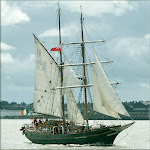

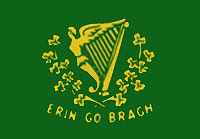




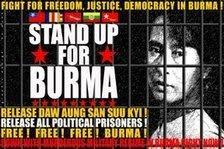
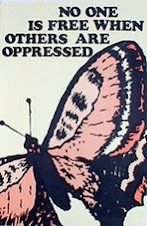






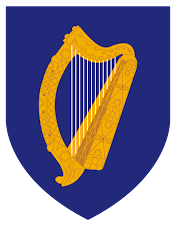

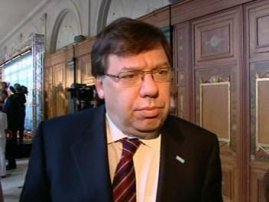




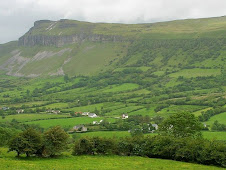
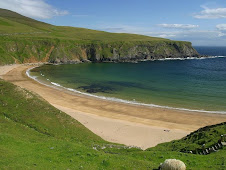













No comments:
Post a Comment